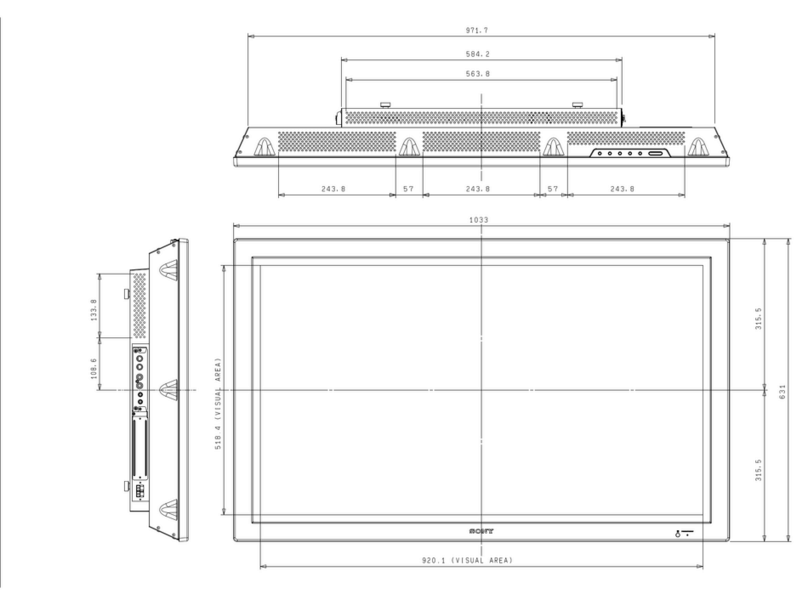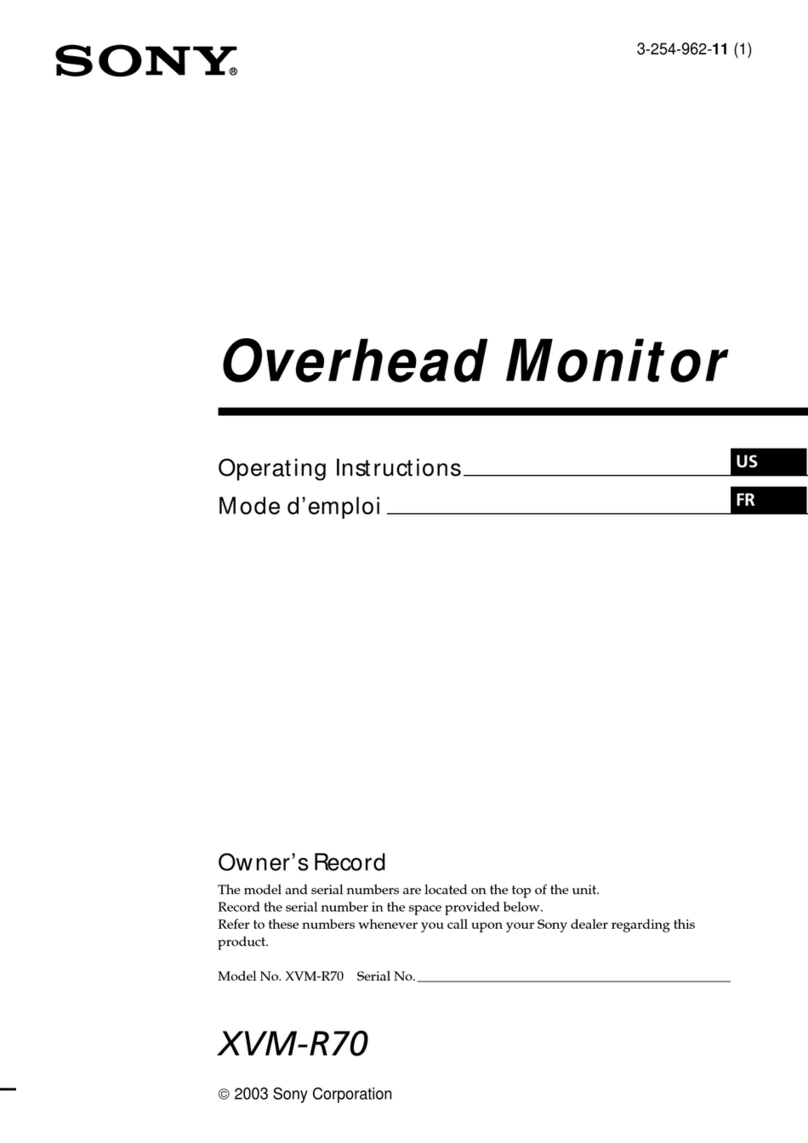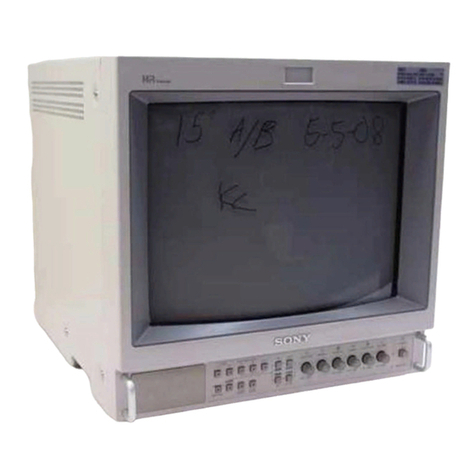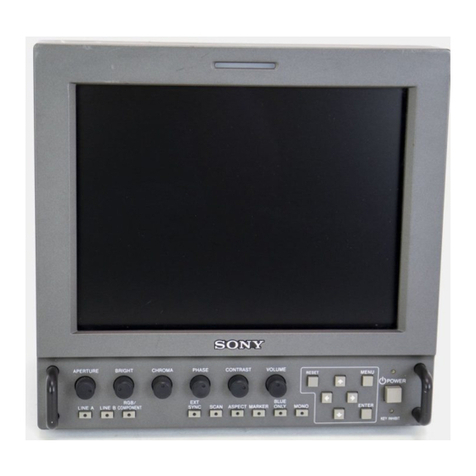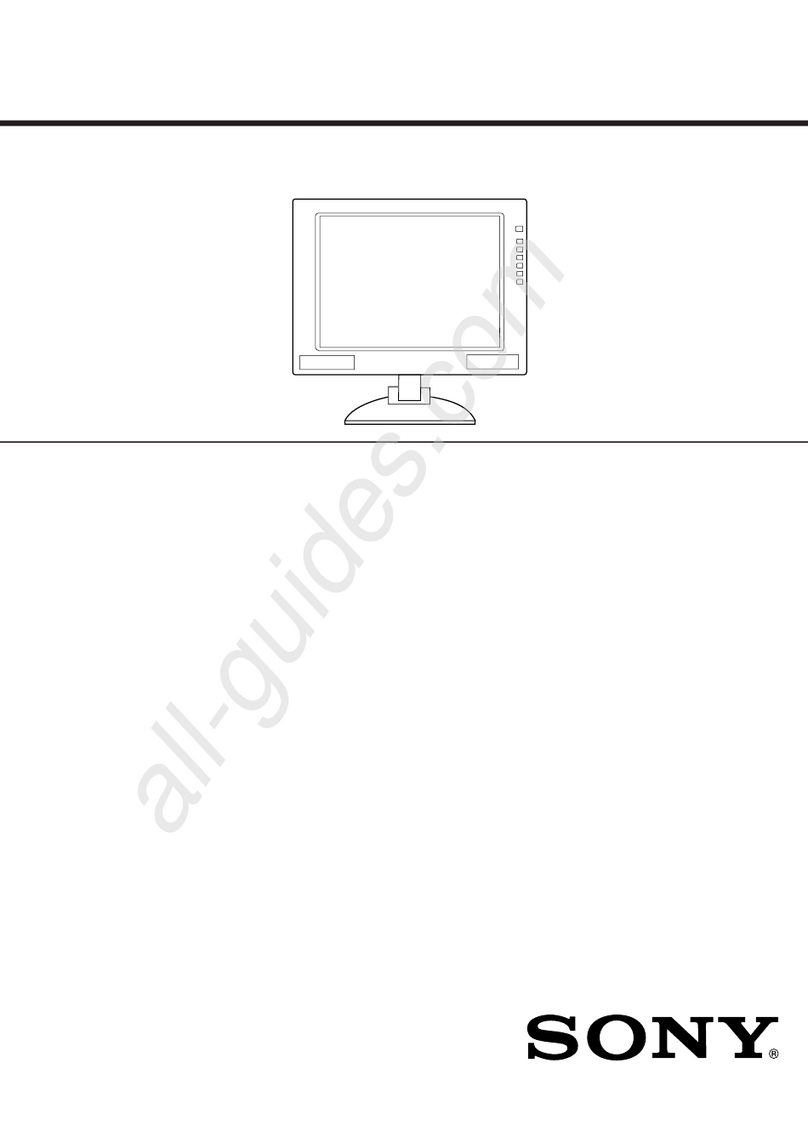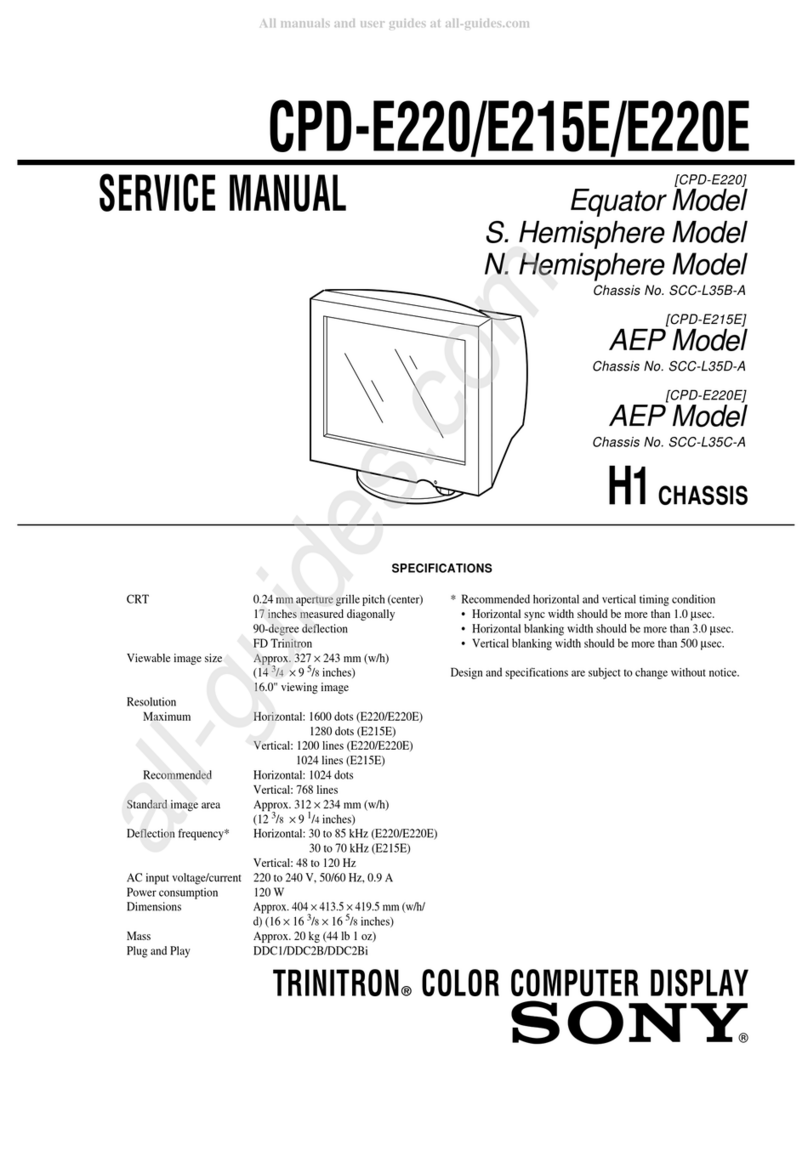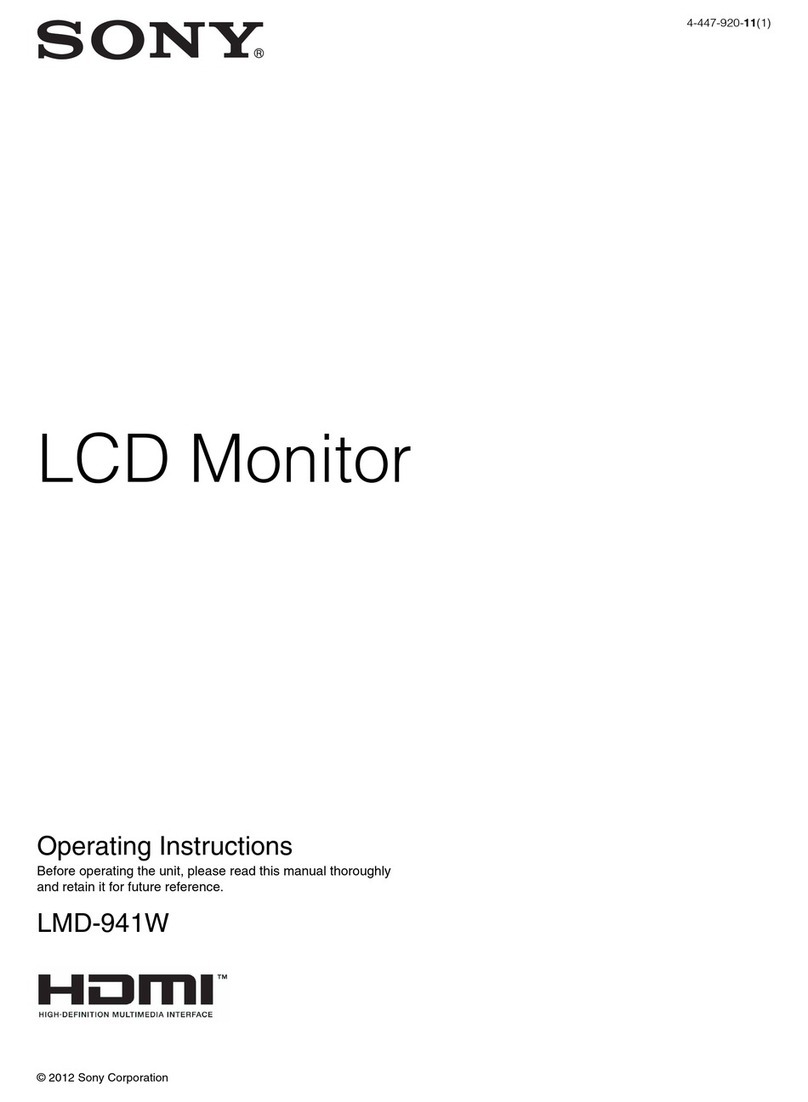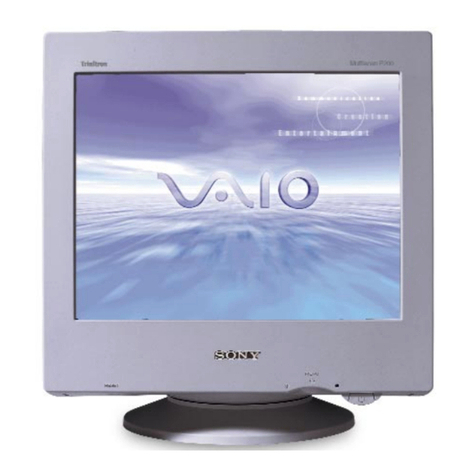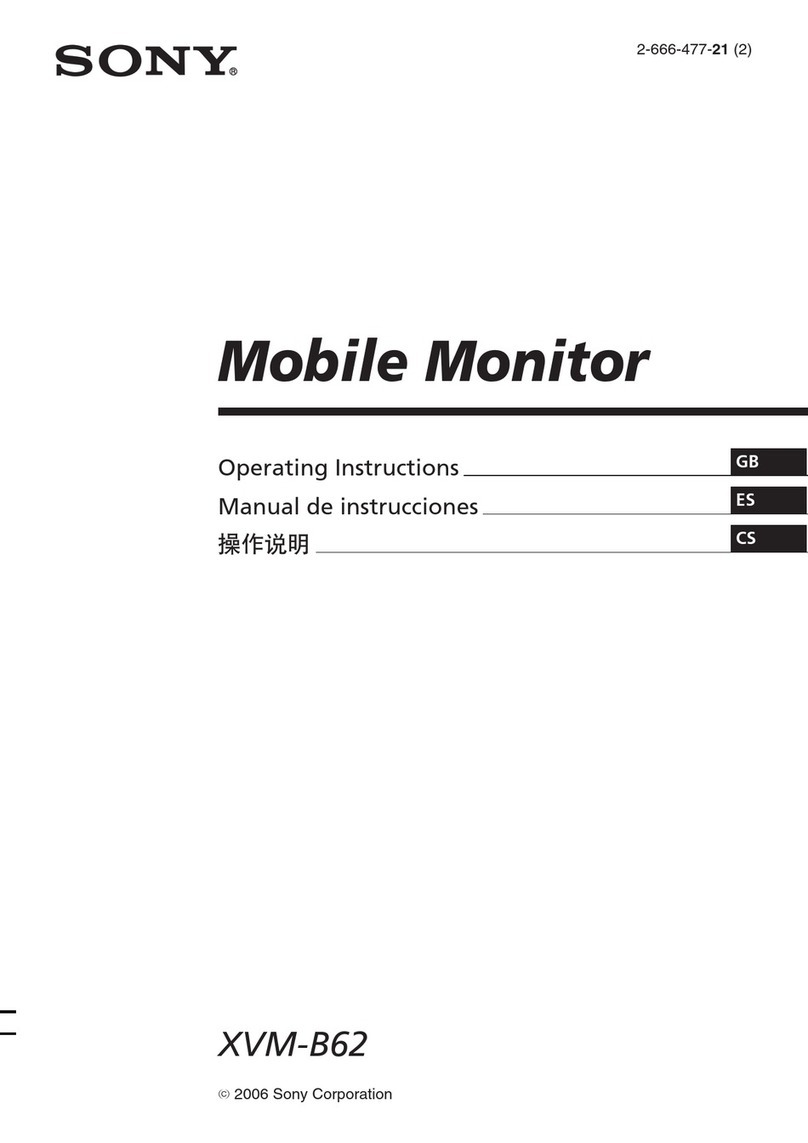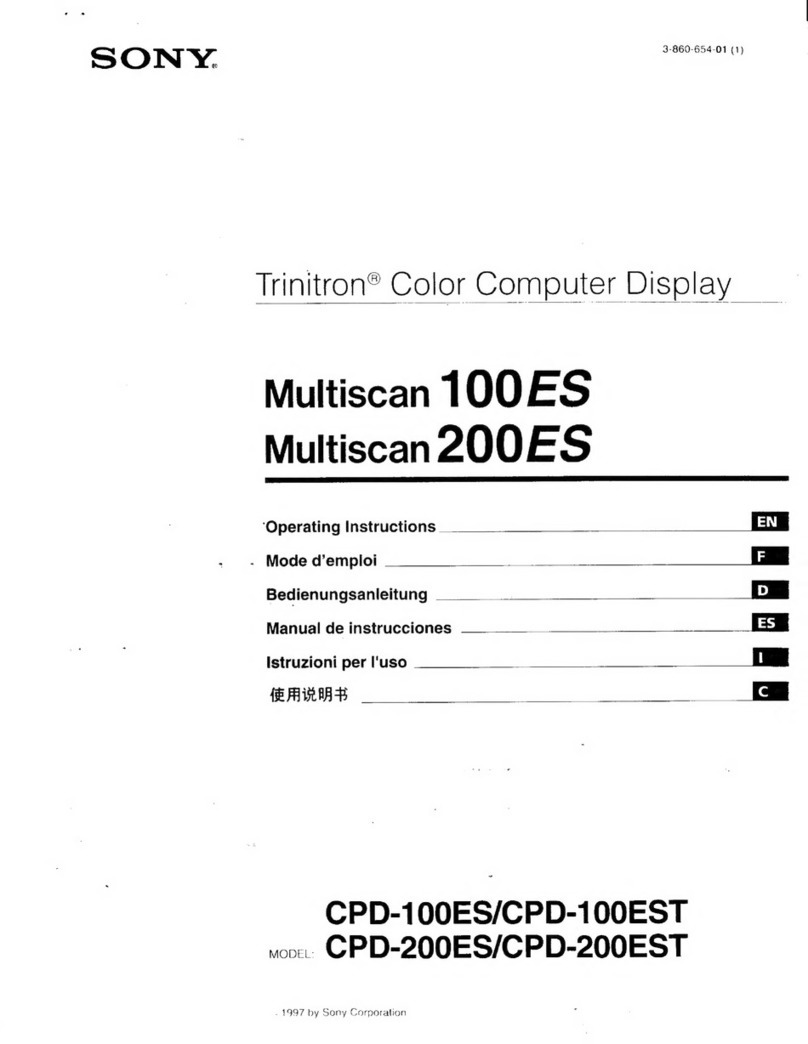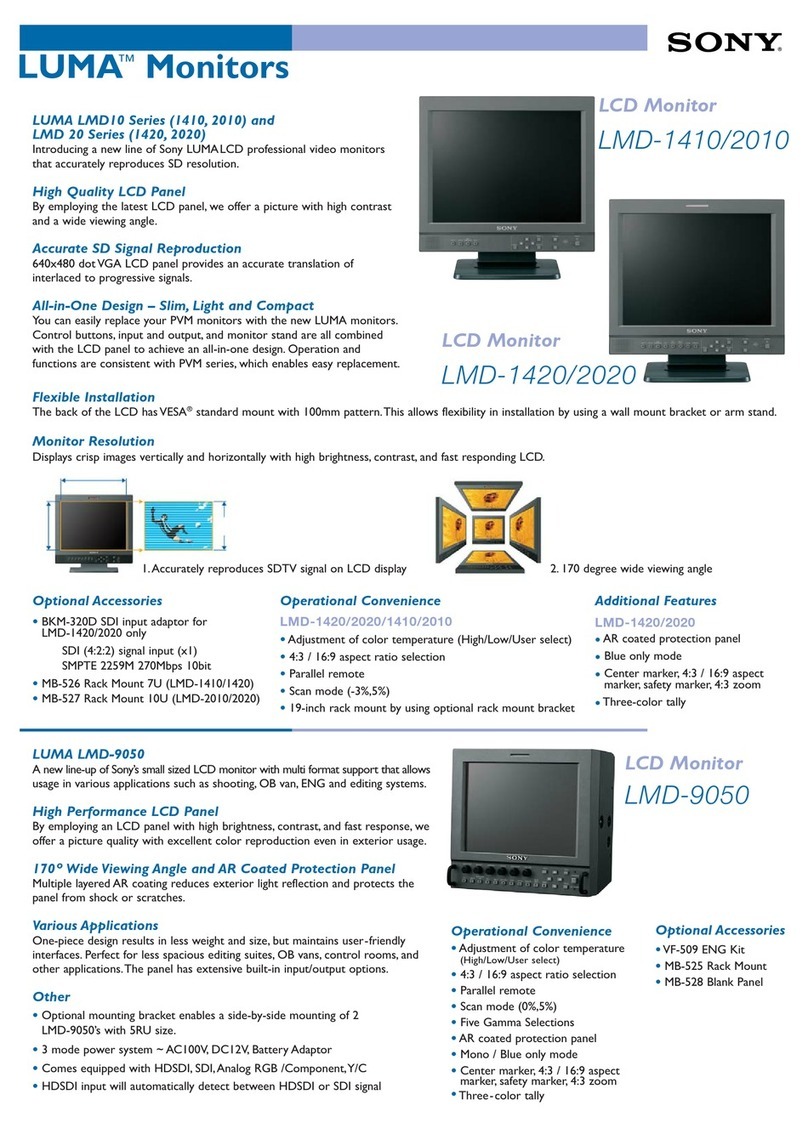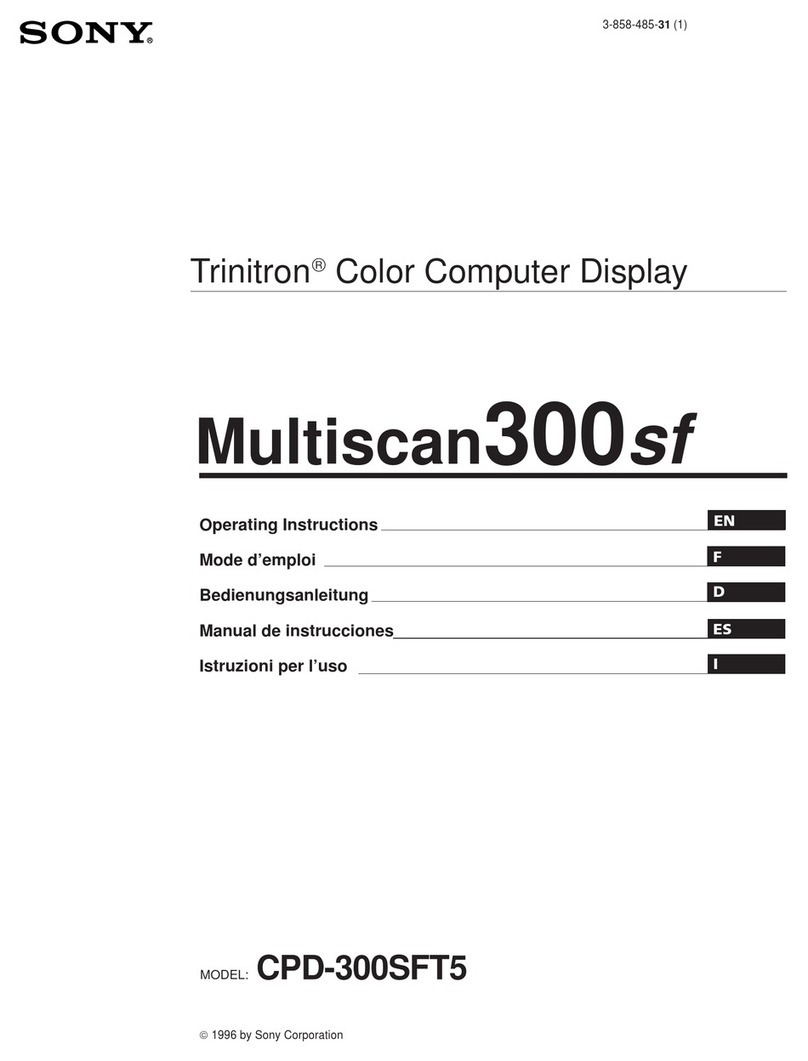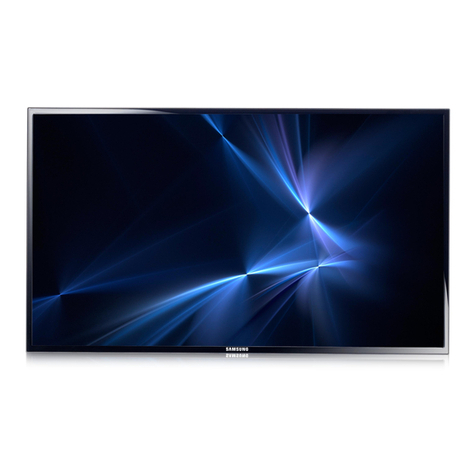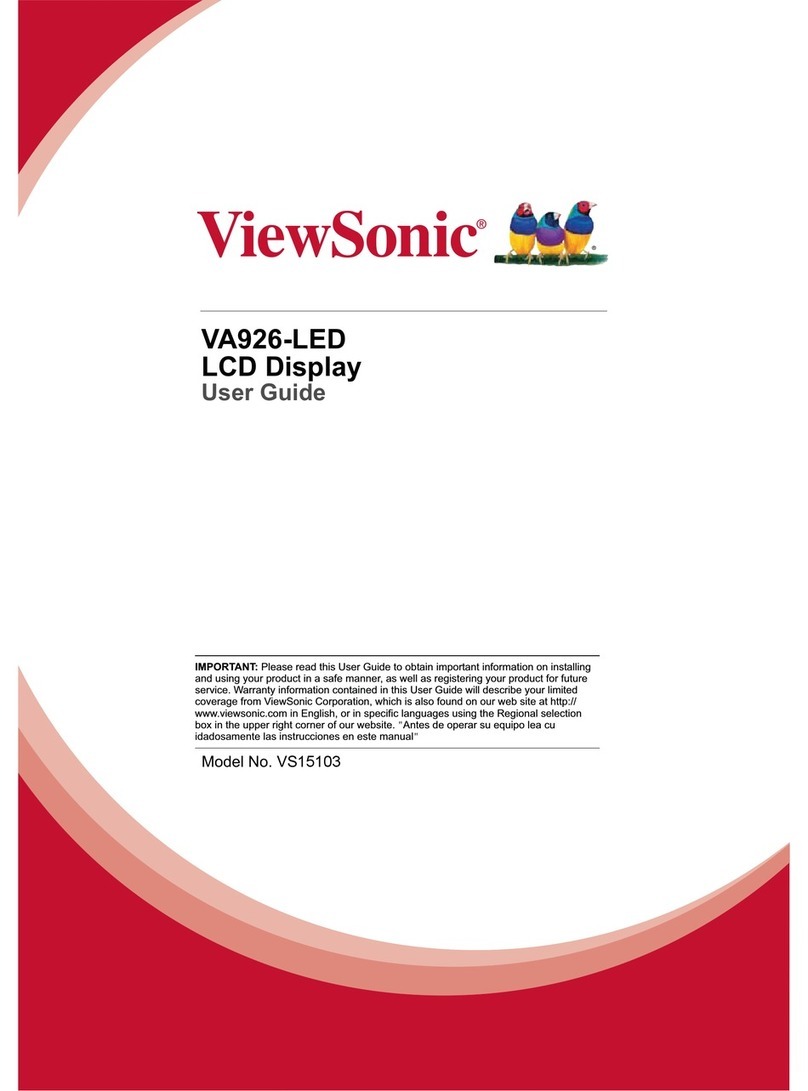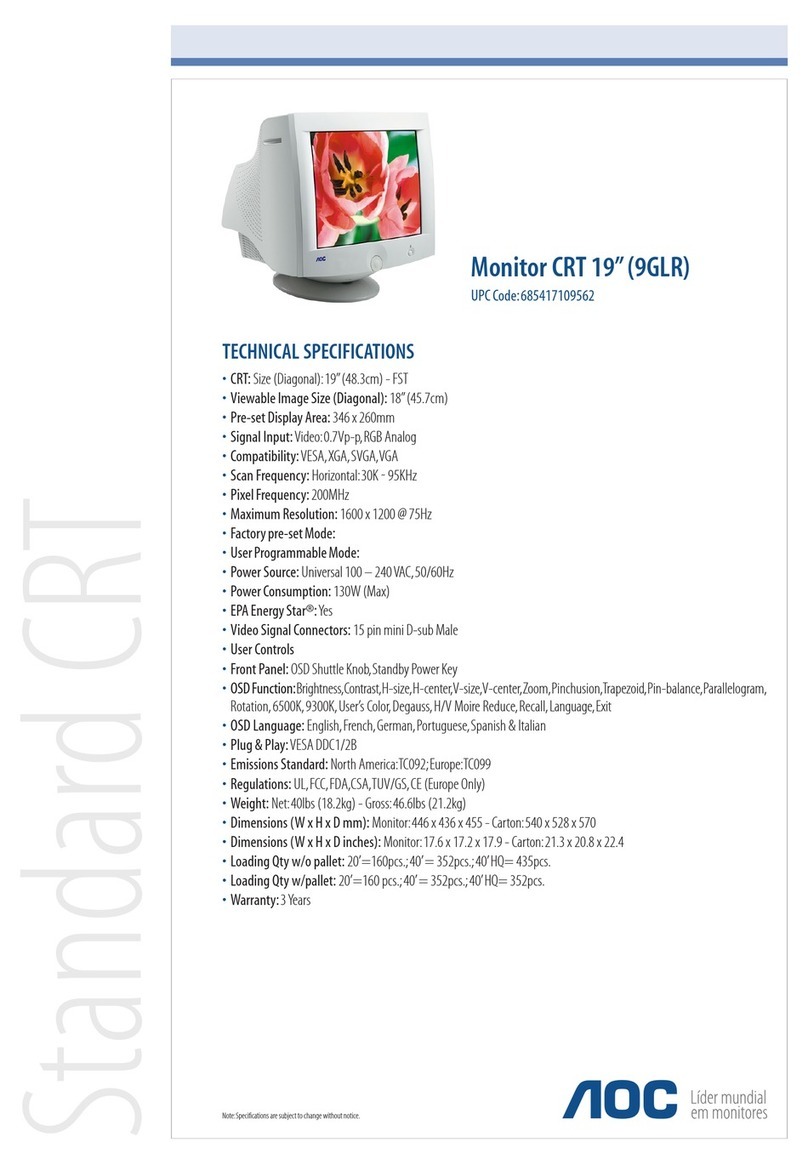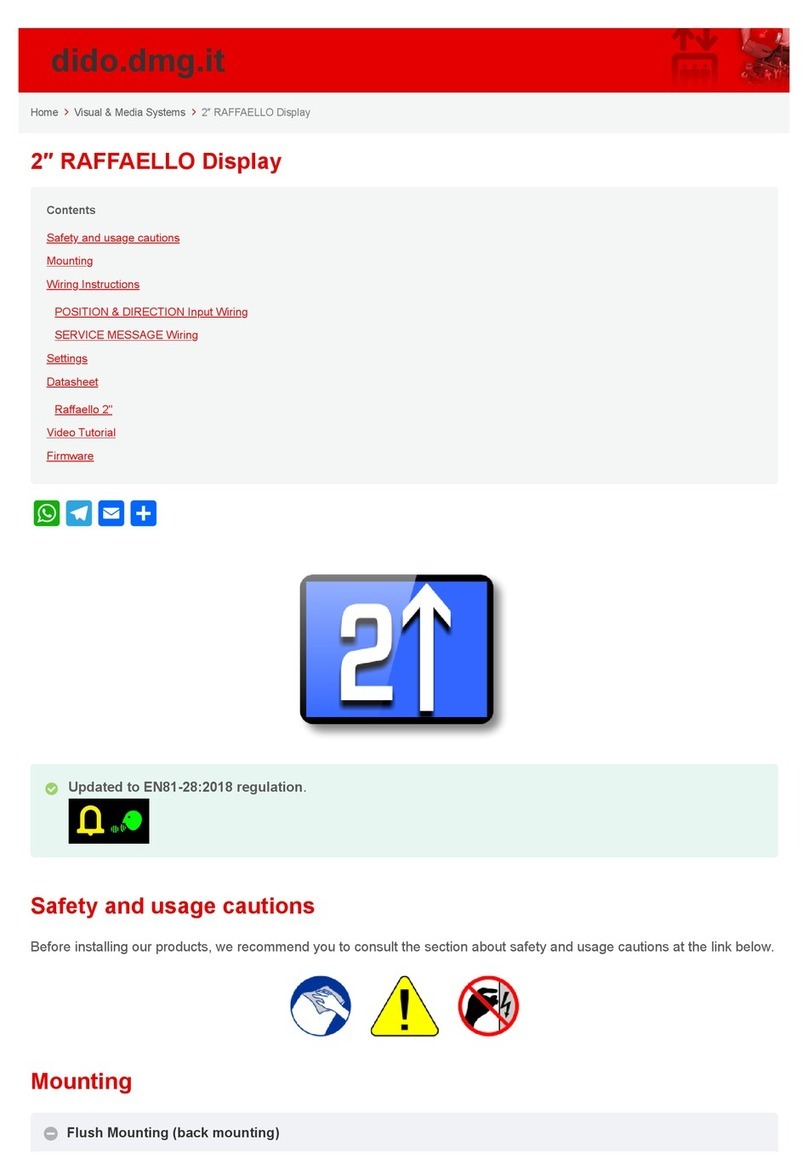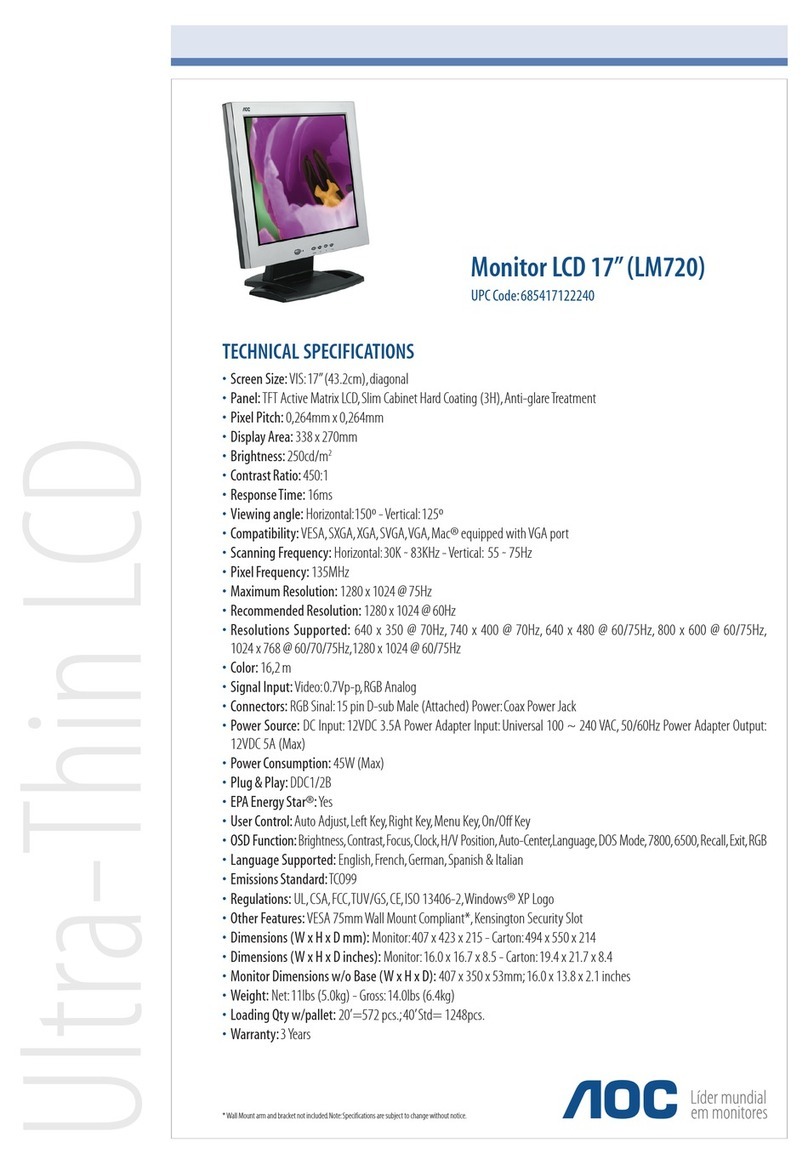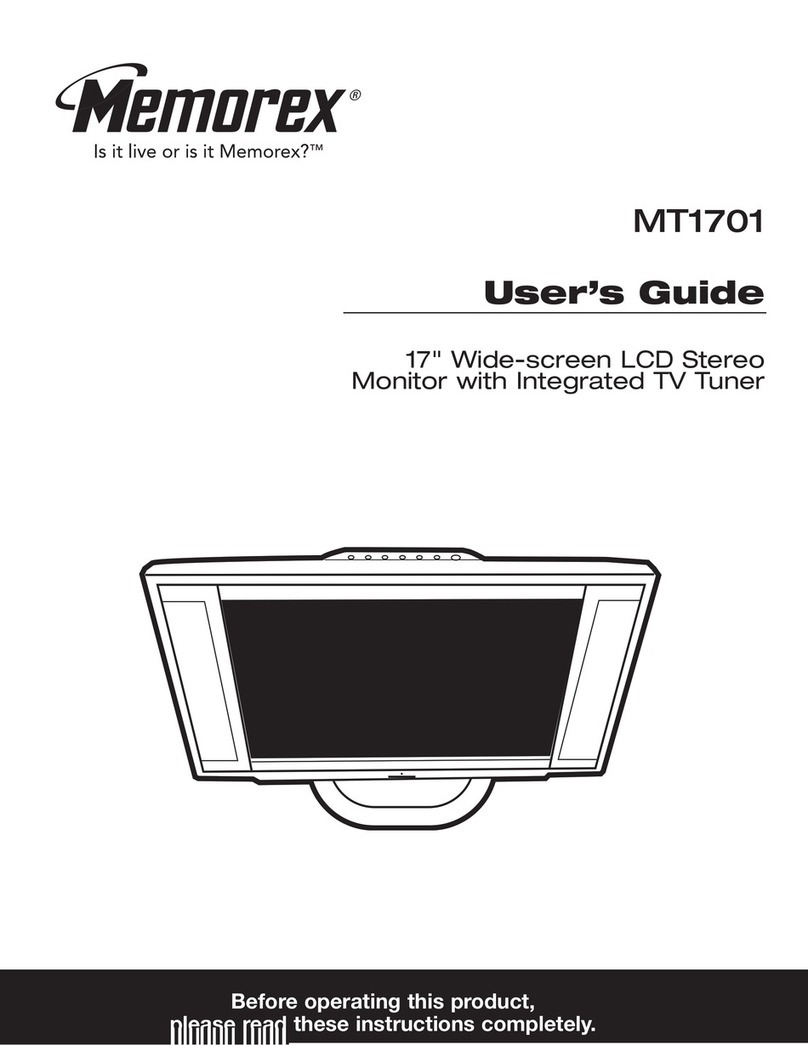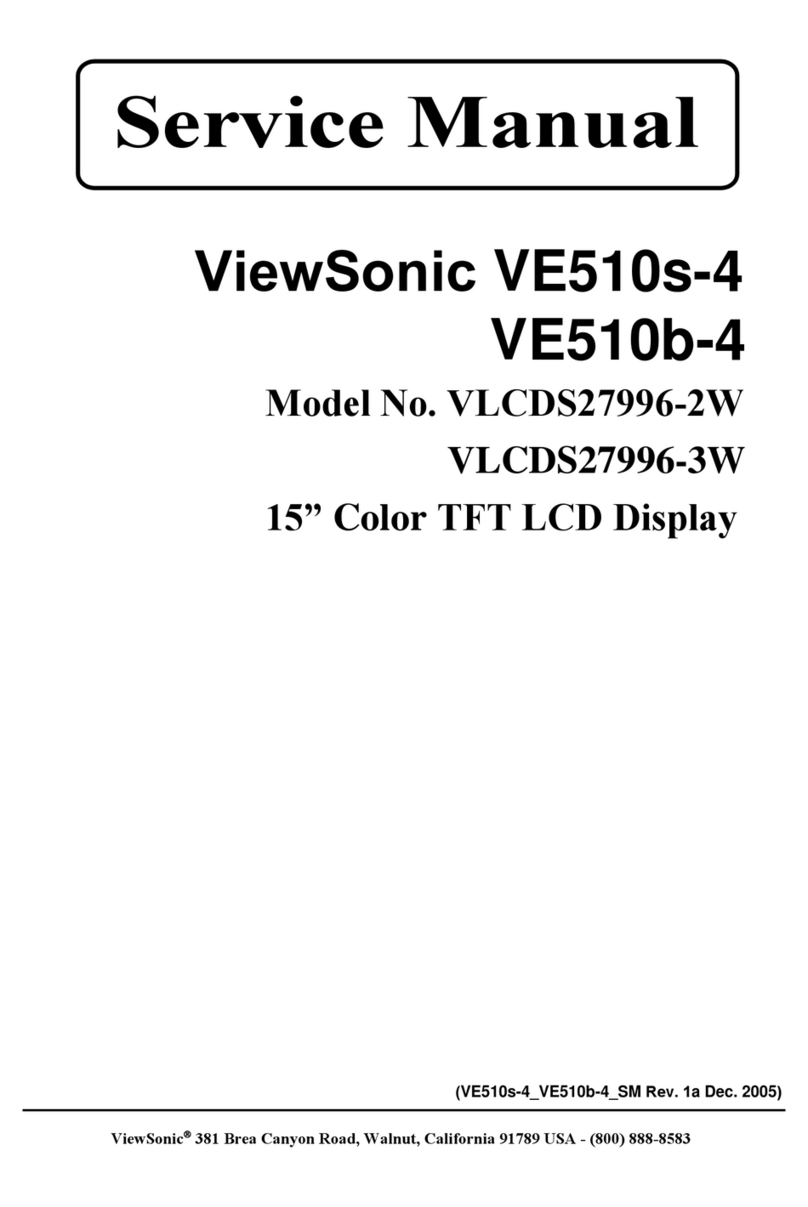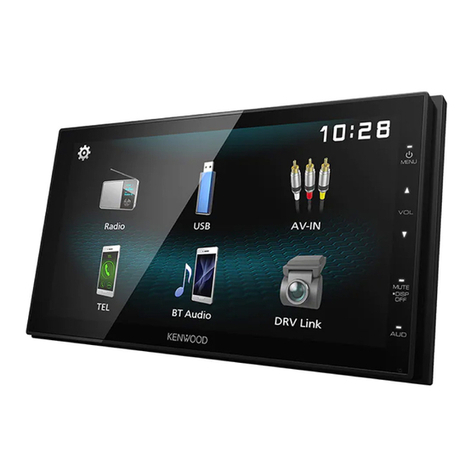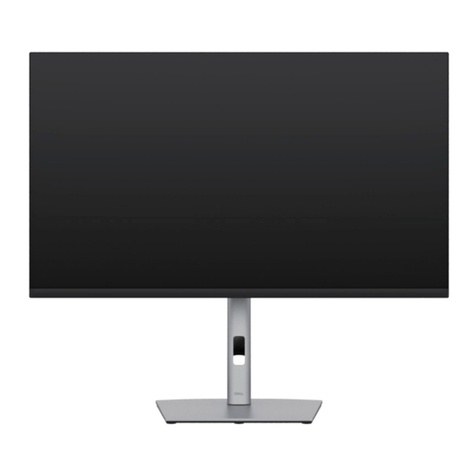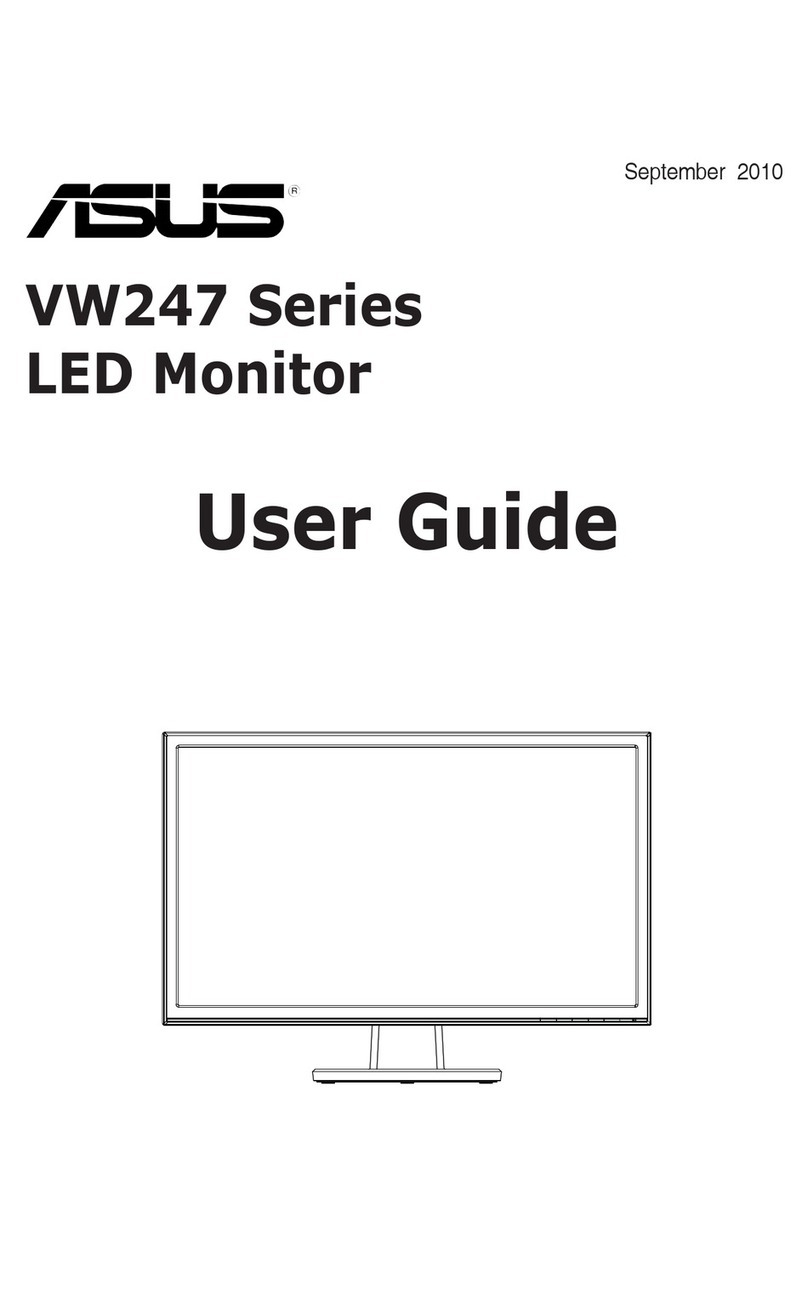
PVM-1271Q
REAR PANEL
OLINE AOLINE B
Two groups (A and B) of line input connectors for the com-
posite video and audio signais and their ioop-through out-
put connectors.
To monitor the input signals to these connectors, press the
LINE Aor LINE Binput select button on the front panel.
VIDEO IN connector (BNC type)
Connect to the video output of avideo equipment, such as a
VTR or acolor video camera. For a ioop-through connection,
connect to the video output of another monitor.
OROGOBOAUDIO (RGB)
Analog RGB and audio input connectors and their loop-
through output connectors.
To monitor the input signal to these connectors, press the
RGB input select button on the front panel.
R/G/B IN conectors (BNC type)
Connect acharacter generator, microcomputer or video
camera having RGB outputs here.
R/G/B OUT connectors (BNC type)
Loop through output of the R/G/B IN connectors. Connect to
the RGB inputs of another monitor here.
VIDEO OUT connector (BNC type)
Loop-through output of the VIDEO IN connector. Connect to
the video input of aVTR or another monitor.
AUDIO IN jack (mini)
Connect to the audio output of aVTR or to amicrophone via
asuitable microphone amplifier. For a loop-through connec-
tion, connect to the audio output of another monitor.
AUDIO OUT jack (mini)
Loop-through output of the AUDIO IN jack. Connect to the
video input of aVTR or another monitor.
75-ohm termination switch
When only the VIDEO IN connector is used (nothing is con-
nected to the VIDEO OUT connector), set this switch to ON.
When both the VIDEO IN and VIDEO OUT connectors are us-
ed together for loop-through connection, set this switch to
OFF.
75-ohm termination switch
When only the R/G/B IN connector is used (nothing is con-
nected to the R/G/B OUT connector), set this switch to ON.
When both the R/G/B IN and R/G/B OUT connectors are used
together for aloop-through connection, set this switch to
OFF.
AUDIO (RGB) IN jack (mini)
Connect the audio output of the equipment connected to
the R/G/B IN connectors here.
AUDIO (RGB) OUT jack (mini)
Loop-through output of the AUDIO (RGB) IN jack.
OCMPTR (computer) connector (25-pin)
Connect with amicrocomputer having a digital (TTL level) or
analog RGB video output.
To monitor the input signal to this connector, press the
CMPTR input select button on the front panel.
OVTR connector (8-pin)
Line input for the video and audio signals. When connected
with the 8-pin TV connector of aVTR, the video and audio
playback signal from the VTR can be connected with a
single cable.
To monitor the input signal to this connector, press the VTR
input select button on the front panel.
•For connection, use an optional video cable VMC-3P (3 m,
9feet), -5P (5 m, 15 feet) or -10P (10 m, 33 feet).
OEXT SYNC (external sync)
IN connector (BNC type)
When this monitor operates on an external sync signal, con-
nect the reference signal from async generator here.
OUT connector (BNC type)
Loop-through output of the EXT SYNC IN connector. Con-
nect to the external sync input of video equipment to be syn-
chronized with this monitor.
75-ohm termination switch
When only the EXT SYNC IN connector is used (nothing is
connected to the EXT SYNC OUT connector), set this switch
to ON.
When both the EXT SYNC IN and EXT SYNC OUT connec-
tors are used together for aloop-through connection, set
this switch to OFF.
Color temperature selection
The color temperature of the PVM-1271Q has been preset at
the factory to 9,300° K, and can be changed to 6,500° K.
The color temperature of the PVM-1371QM has been preset
to 6,500°K, and can be changed to 9,300°K.
If the switching of the color temperature is required, consult
your authorized Sony dealer.
8


